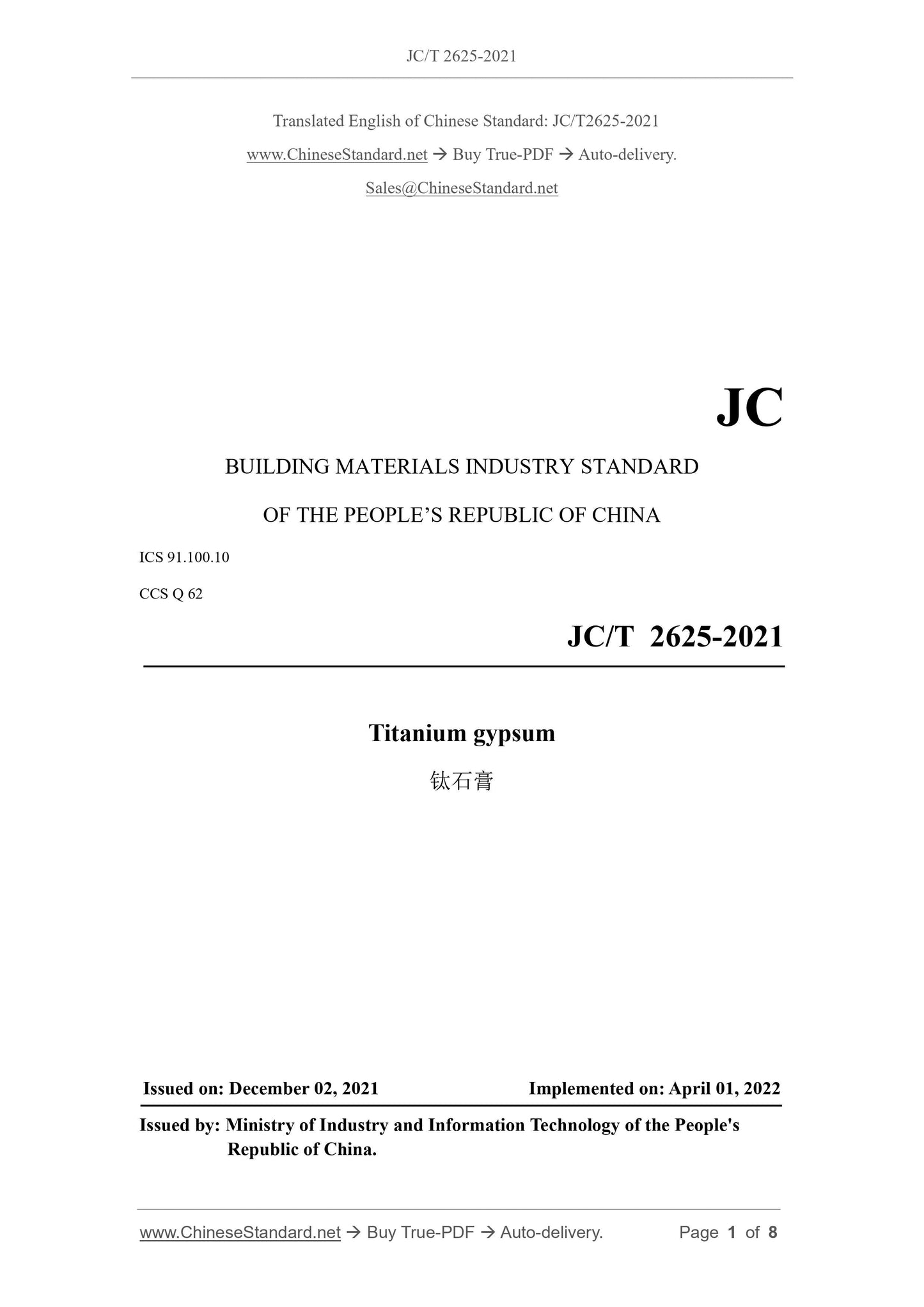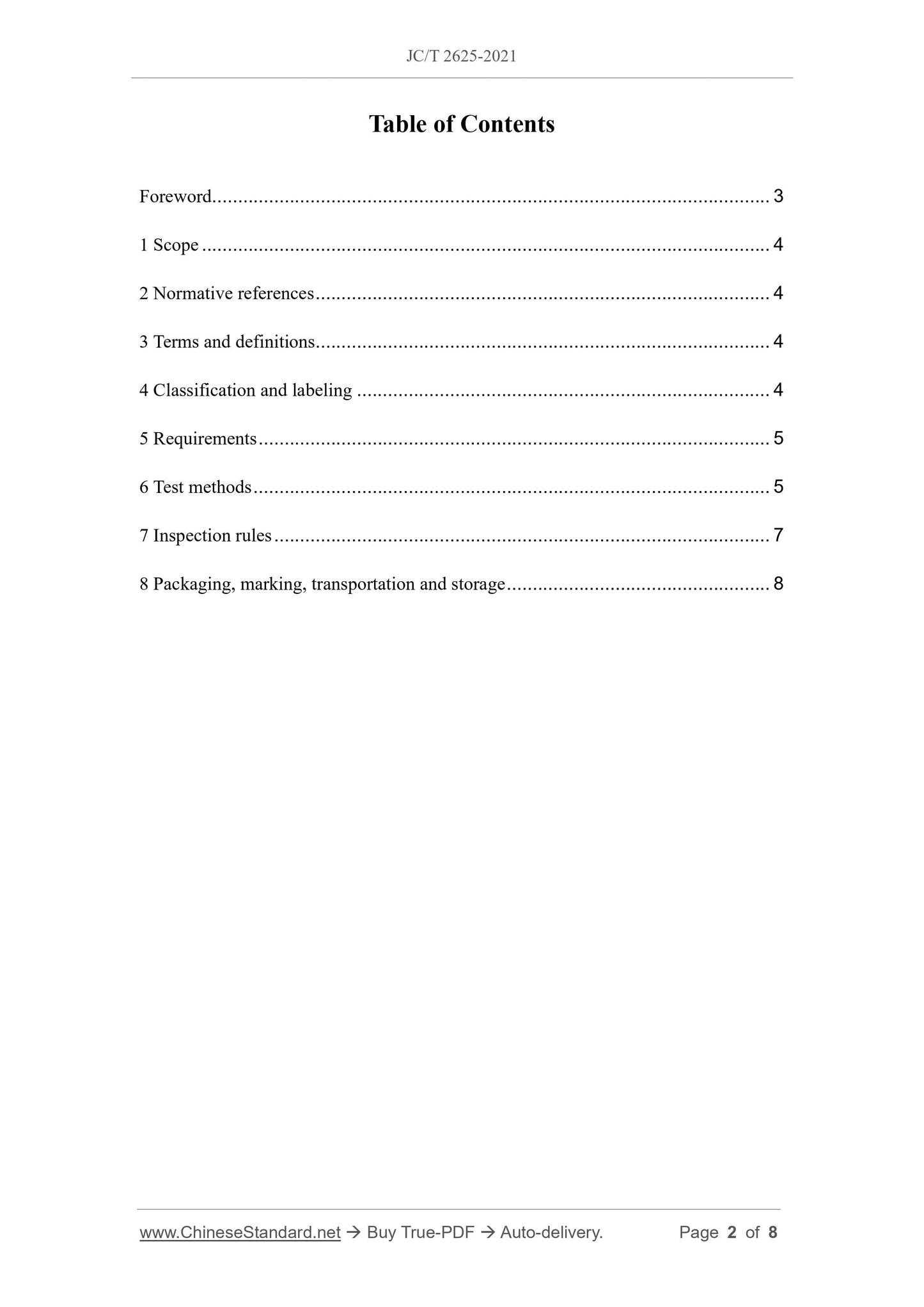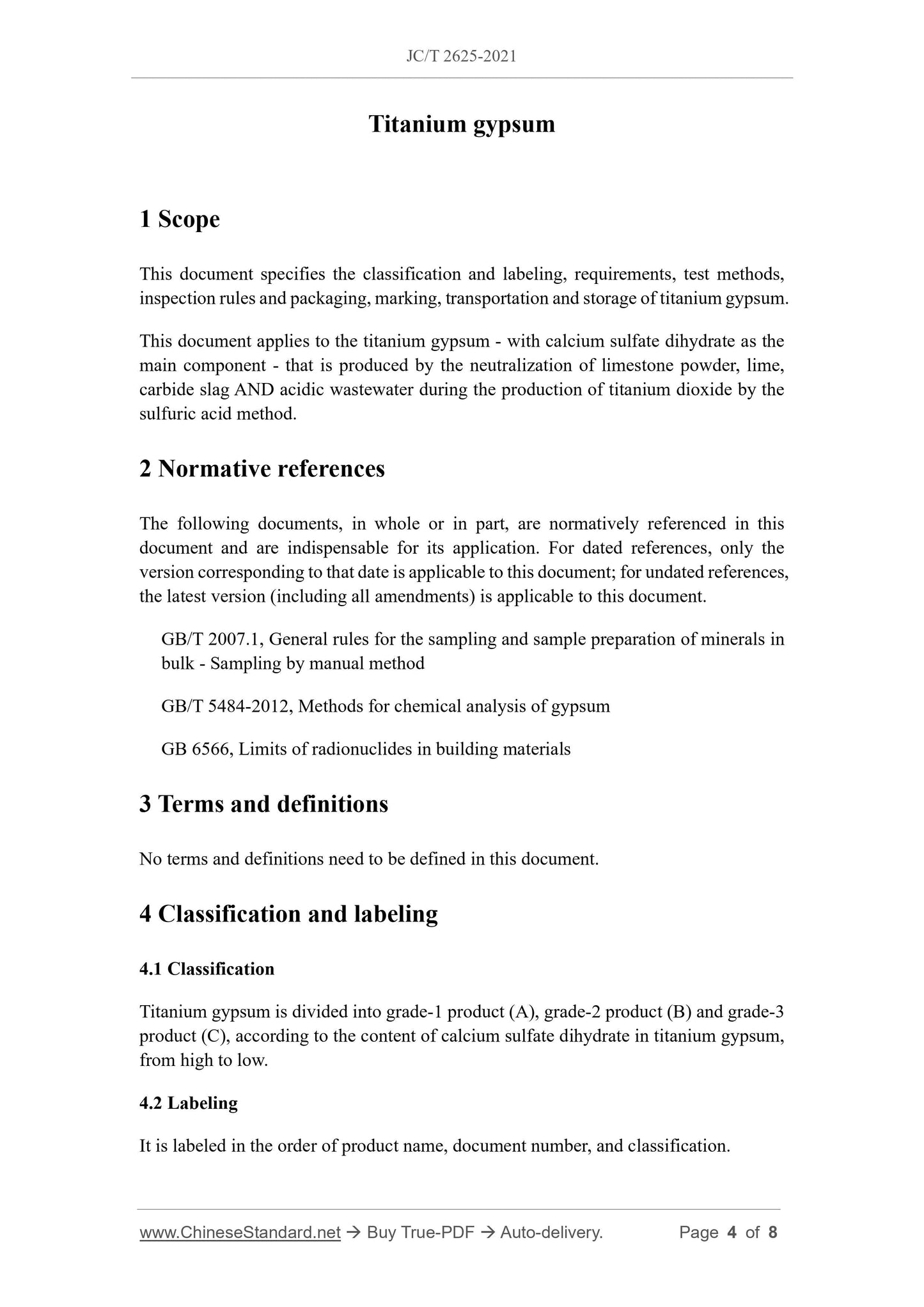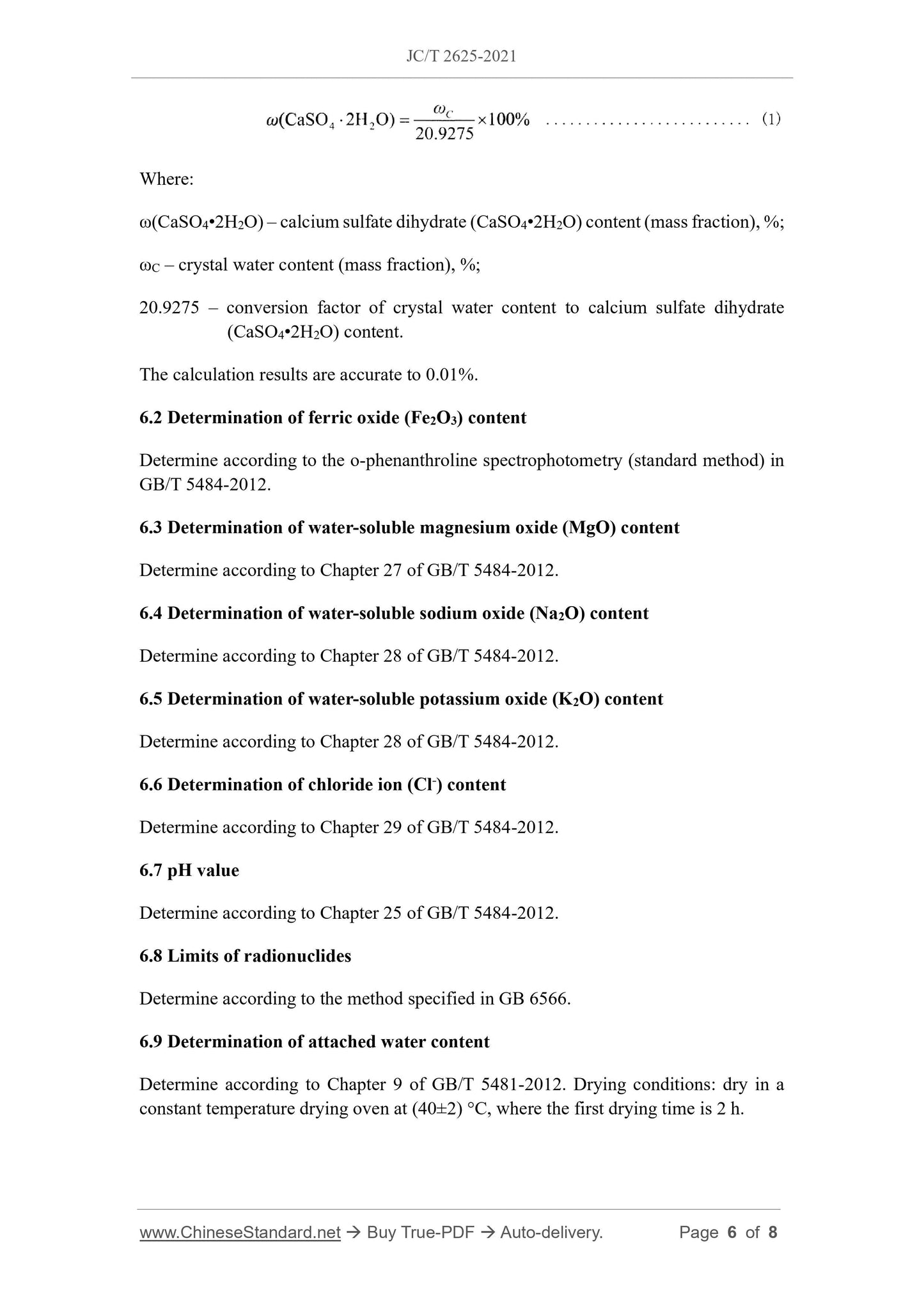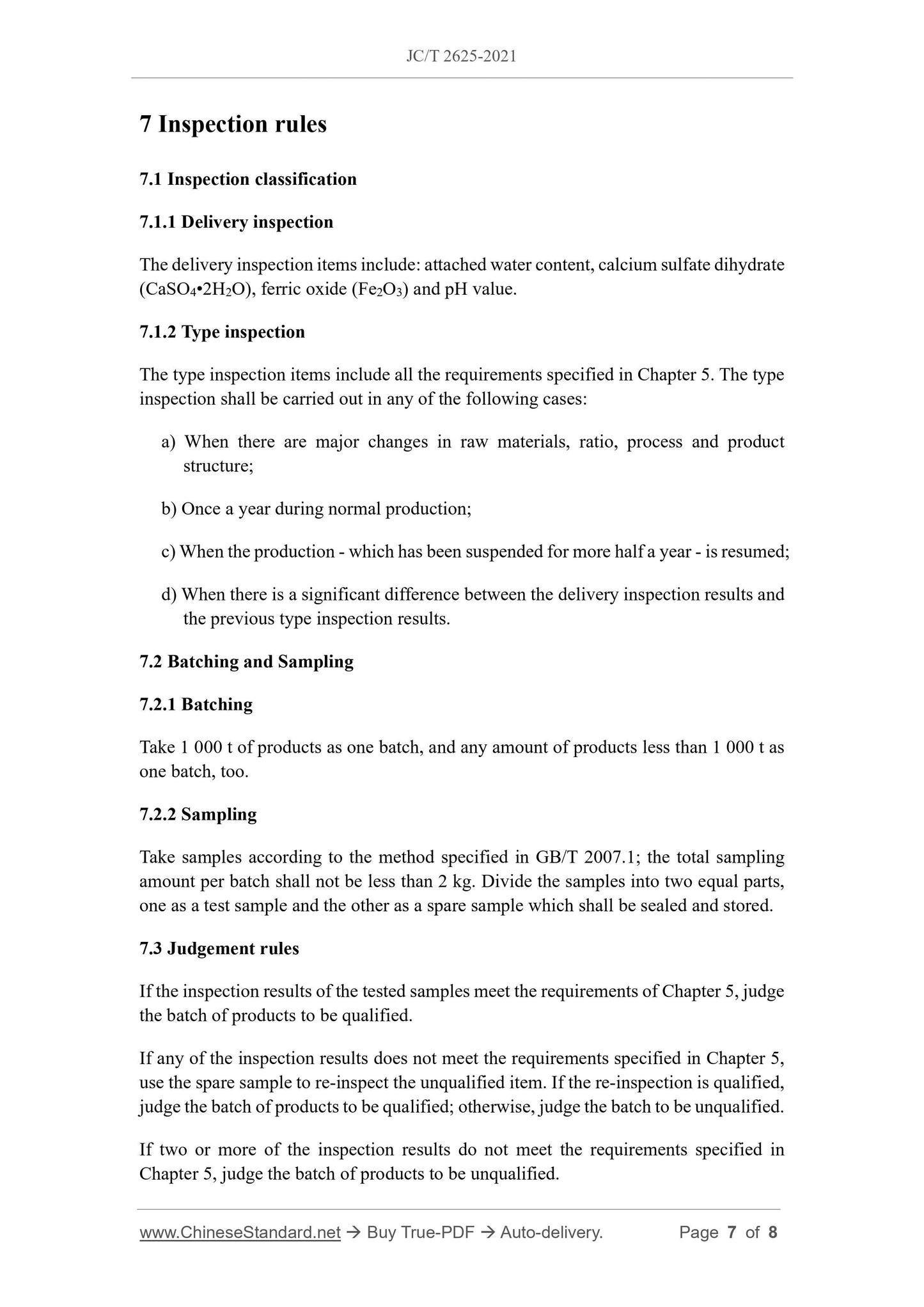1
/
of
5
www.ChineseStandard.us -- Field Test Asia Pte. Ltd.
JC/T 2625-2021 English PDF (JC/T2625-2021)
JC/T 2625-2021 English PDF (JC/T2625-2021)
Regular price
$110.00
Regular price
Sale price
$110.00
Unit price
/
per
Shipping calculated at checkout.
Couldn't load pickup availability
JC/T 2625-2021: Titanium gypsum
Delivery: 9 seconds. Download (and Email) true-PDF + Invoice.Get Quotation: Click JC/T 2625-2021 (Self-service in 1-minute)
Newer / historical versions: JC/T 2625-2021
Preview True-PDF
Scope
This document specifies the classification and labeling, requirements, test methods,inspection rules and packaging, marking, transportation and storage of titanium gypsum.
This document applies to the titanium gypsum - with calcium sulfate dihydrate as the
main component - that is produced by the neutralization of limestone powder, lime,
carbide slag AND acidic wastewater during the production of titanium dioxide by the
sulfuric acid method.
Basic Data
| Standard ID | JC/T 2625-2021 (JC/T2625-2021) |
| Description (Translated English) | Titanium gypsum |
| Sector / Industry | Building Materials Industry Standard (Recommended) |
| Classification of Chinese Standard | Q62 |
| Word Count Estimation | 6,641 |
| Issuing agency(ies) | Ministry of Industry and Information Technology |
Share
